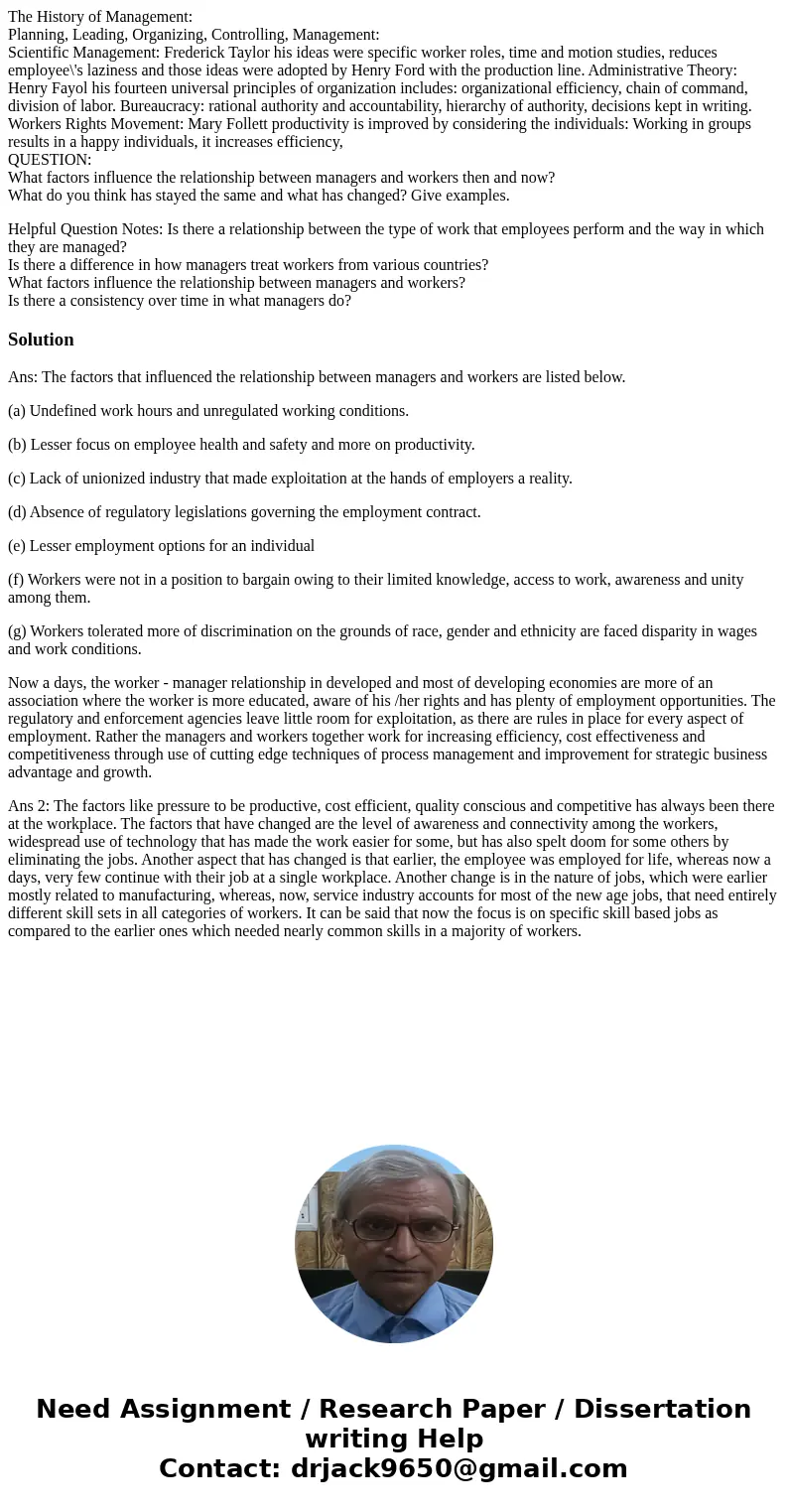The History of Management Planning Leading Organizing Contro
The History of Management:
Planning, Leading, Organizing, Controlling, Management:
Scientific Management: Frederick Taylor his ideas were specific worker roles, time and motion studies, reduces employee\'s laziness and those ideas were adopted by Henry Ford with the production line. Administrative Theory: Henry Fayol his fourteen universal principles of organization includes: organizational efficiency, chain of command, division of labor. Bureaucracy: rational authority and accountability, hierarchy of authority, decisions kept in writing. Workers Rights Movement: Mary Follett productivity is improved by considering the individuals: Working in groups results in a happy individuals, it increases efficiency,
QUESTION:
What factors influence the relationship between managers and workers then and now?
What do you think has stayed the same and what has changed? Give examples.
Helpful Question Notes: Is there a relationship between the type of work that employees perform and the way in which they are managed?
Is there a difference in how managers treat workers from various countries?
What factors influence the relationship between managers and workers?
Is there a consistency over time in what managers do?
Solution
Ans: The factors that influenced the relationship between managers and workers are listed below.
(a) Undefined work hours and unregulated working conditions.
(b) Lesser focus on employee health and safety and more on productivity.
(c) Lack of unionized industry that made exploitation at the hands of employers a reality.
(d) Absence of regulatory legislations governing the employment contract.
(e) Lesser employment options for an individual
(f) Workers were not in a position to bargain owing to their limited knowledge, access to work, awareness and unity among them.
(g) Workers tolerated more of discrimination on the grounds of race, gender and ethnicity are faced disparity in wages and work conditions.
Now a days, the worker - manager relationship in developed and most of developing economies are more of an association where the worker is more educated, aware of his /her rights and has plenty of employment opportunities. The regulatory and enforcement agencies leave little room for exploitation, as there are rules in place for every aspect of employment. Rather the managers and workers together work for increasing efficiency, cost effectiveness and competitiveness through use of cutting edge techniques of process management and improvement for strategic business advantage and growth.
Ans 2: The factors like pressure to be productive, cost efficient, quality conscious and competitive has always been there at the workplace. The factors that have changed are the level of awareness and connectivity among the workers, widespread use of technology that has made the work easier for some, but has also spelt doom for some others by eliminating the jobs. Another aspect that has changed is that earlier, the employee was employed for life, whereas now a days, very few continue with their job at a single workplace. Another change is in the nature of jobs, which were earlier mostly related to manufacturing, whereas, now, service industry accounts for most of the new age jobs, that need entirely different skill sets in all categories of workers. It can be said that now the focus is on specific skill based jobs as compared to the earlier ones which needed nearly common skills in a majority of workers.

 Homework Sourse
Homework Sourse